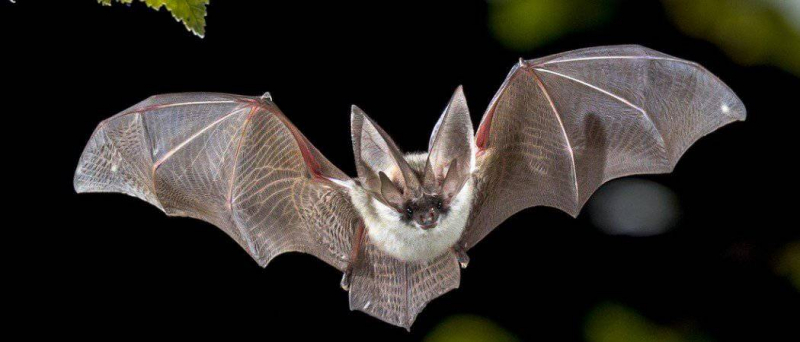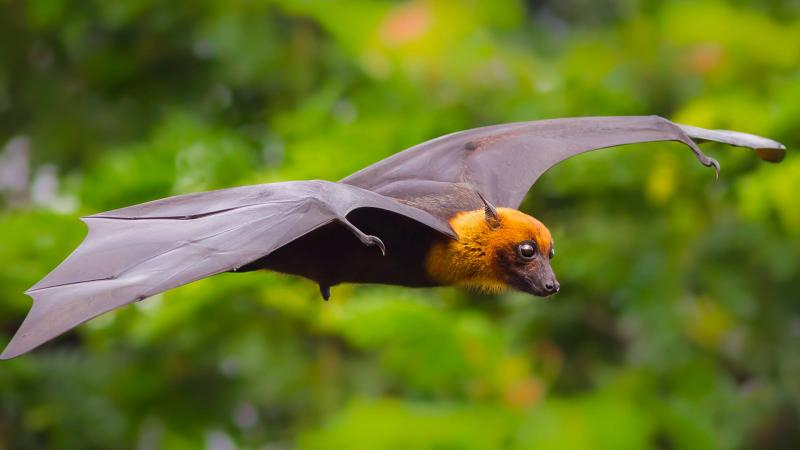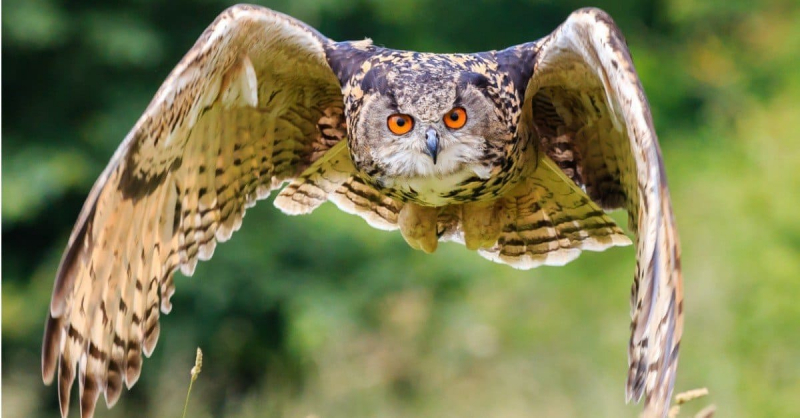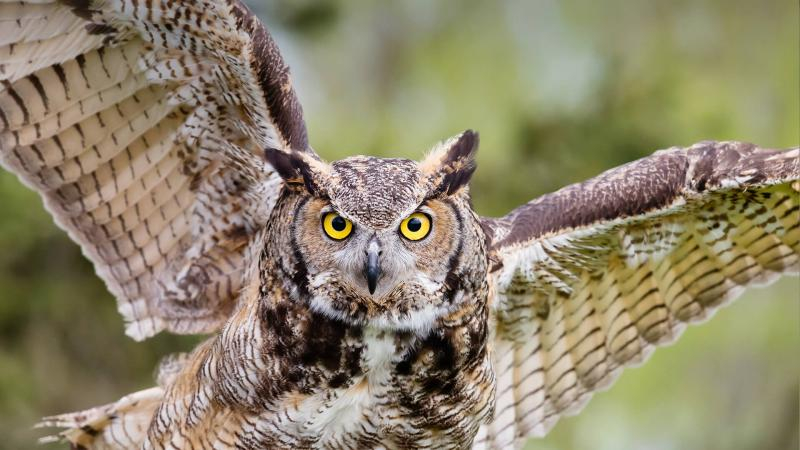Top 10 Best Hearing Animals
The human ear can perceive frequencies ranging from 20Hz to 20,000kHz. We have some of the greatest visions in the animal kingdom, but there are a few ... read more...creatures who have us beat when it comes to hearing. Animals can handle higher frequencies better than humans. Here are the best hearing animals.
-
Bats have the finest hearing of any terrestrial animal and of course, it's indispensable on the list of the best hearing animals. Bats with erect ears that are relatively small for bats and with black or brown hair. The design of bats' ears helps them catch noises. Their front limbs have evolved into wings, and they are well-known for their exceptional flight abilities.
When flying, bats utilize their hearing and a technique called echolocation to find prey and objects. When they fly, they make incredibly high-pitched squeaks known as ultrasound. When sound strikes an item (tree, building, prey), it bounces back to them almost like an echo, allowing the bat to pinpoint its location. This helps them to hunt for beetles, moths, and mosquitoes using their ears rather than their eyes. Bats can perceive noises between 1 and 200 kHz, however, the exact range varies by species but in general, bats' hearing sensitivity is practically legendary.
Sensing Sound Frequencies: Between 1 and 200 kHz

a-z-animals.com 
storytimes.co -
Surprisingly, moths have extraordinary hearing and can detect bats from a distance of 100 feet before the bat ever notices them. The Greater Wax moth has the best hearing of any of the 160,000 species of moths on the planet. Greater wax moths can perceive sound at greater frequencies than any other species on the planet, up to 300 kHz, this is what makes it on the list of the best hearing animals, to say exactly not the best, but beyond imagination, making it impossible for scientists to believe that such a small insect has such ultrasonic hearing.
Moths have nerve cells in their ears that allow them to perceive even the tiniest movement or sound. They reverse course and begin flying in an evasive manner as soon as they hear a predator approaching. Until the threat is gone, some even shut their wings and drop to the ground.
Sensing Sound Frequencies: Up to 300kHz

a-z-animals.com 
10mosttoday.com -
There are around 225 species of owls in the world, and owls are most recognized for their extraordinary vision. These amazing birds of prey, on the other hand, have exceptional hearing, which helps them in their nighttime hunting activities. They are concealed by the feathers, the outer ear does not exist. The ears are located asymmetrically, the left ear of most owl species is somewhat lower than the right.
When a sound hits their ears, they can better discern the direction it came from. Owls have been shown to have an exceptional hearing at frequencies higher than 5 kHz. Great grey owls frequently hunt only by hearing, detecting little rodents moving about beneath the snow, and striking with lethal accuracy. Especially, the owl's hearing does not deteriorate with age.
Sensing Sound Frequencies: Between 200Hz and 12KHz

a-z-animals.com 
storytimes.co -
Dolphins, like bats, utilize echolocation to locate prey and objects. These amazing aquatic creatures, on the other hand, employ echolocation underwater rather than in the air. They can hear noises between 20 and 150 kHz, which is seven times better than humans. Clicking and high-pitched whistles and squeaks are the most common noises made by dolphins. Their clicks create sound waves that ricochet off objects and prey, allowing them to identify their precise size and location (echolocation).
Dolphins listen to and hear noises through tiny ear holes on both sides of their skulls. They would normally use these little apertures for hearing when they are not underwater. They utilize their lower jawbone, which carries sounds to their middle ear, to hear noises underwater. Dolphins utilize noises to communicate with one another and to identify things and creatures underwater. There's also evidence that dolphins "speak" to one another, giving names to various noises.
Sensing Sound Frequencies: Between 20Hz and 150KHz

a-z-animals.com 
storytimes.co -
Dogs have long been regarded as man's greatest friends, and they are both devoted companions and capable workers. They have far greater hearing than humans do, hearing about twice as many frequencies as we do. Dogs can also hear noises four times further away than humans can. Dogs can hear noises that humans cannot, which is why many dog whistles appear to be silent to us but are heard by the dog even if they are a long distance away.
People frequently believe that dogs have a sixth sense for things like knowing when their owners return home. They have, however, identified the car's sound and can determine its exact location. Dogs' ears are regulated by 18 muscles and may be tilted and rotated to assist them to pinpoint the source of the noise. Therefore, dogs are one of the best hearing animals, they don't have a sixth sense.
Sensing Sound Frequencies: Between 6000Hz and 65000Hz

a-z-animals.com 
storytimes.co -
If you believe dogs have good hearing, a cat has much greater hearing. Cats have 30 muscles in their ears that allow them to perceive high-pitched noises up to 64 kHz. Their ears may even spin up to 180 degrees. A cat's ears will swivel in that direction while listening for anything, and its ear flaps (pinnae) may independently point backward, forwards, and sideways to locate the source of the sound.
Cats utilize their keen hearing to assist them in catching mice and birds. This is so they can keep track of their prey while waiting for the perfect opportunity to strike. Cats are highly perceptive because they can filter out surrounding noise. This is so they don't feel overwhelmed and can concentrate on the things that matter.
Sensing Sound Frequencies: Up to 64kHz

a-z-animals.com 
storytimes.co -
Horses are capable of hearing sounds from up to 2.5 miles away. They use their hearing for three main purposes: to detect noises, identify their position, and offer sensory information that helps the horse to distinguish the sounds' identities. They have ears that can swivel 180 degrees using 10 different muscles (compared to three muscles for the human ear) and can single out a specific area to listen to. This allows the horse to orient itself toward the sounds to be able to determine what is making the noises and can hear noises up to 25 kHz. This enables them to pinpoint the exact location of the sound source.
Horses, being flying animals, they are the best hearing animals. They use their hearing to determine whether the sound is dangerous and whether they should leave. This is especially important for wild horses who may be threatened by predators such as mountain lions, wolves, and bears. Horses employ a variety of sounds to communicate, and their capacity to hear and respond to other horses is crucial.
Sensing Sound Frequencies: Range of 14Hz to 25kHz

a-z-animals.com 
10mosttoday.com -
Wolfs rely on their hearing, as well as their sense of smell when hunting. A wolf can hear noises up to a frequency of 80 kHz from a distance of 10 miles in the open and 6 miles in the woodland. Their ears can spin independently, allowing them to pinpoint the exact location of a sound. Wolves have great hearing, which allows them to notice even the tiniest sound emitted by possible prey. Wolves rely on their hearing in more than simply hunting situations.
There is no sound eerier than that of a wolf howling. Wolfs use a variety of howls, whimpers, barks, and growls to communicate. These sounds are used to warn of danger or to warn another pack to keep away, and their ability to hear them is critical to their survival.
Sensing Sound Frequencies: Up to 80kHz

a-z-animals.com 
10mosttoday.com -
Elephants have exceptional hearing, and their huge ears are utilized to funnel sound waves, allowing them to hear even better. They frequently communicate using a variety of low-frequency rumblings and noises that are inaudible to humans. They can hear another elephant's call from as far as 2.5 miles away on average, and considerably further under excellent conditions. Elephants are another animal commonly associated with low-frequency hearing at long distances but it is also one of the best hearing animals, detecting sounds as low as 14 to 16Hz.
Elephants are supposed to transmit their sound waves both via the air and through the ground as vibrations. In their toes, they contain a multitude of receptor cells that allow them to perceive vibrations via their feet. This amazing characteristic is supposed to be the reason why many elephants modify their behavior and act strangely before an earthquake because they have detected the seismic activity's vibrations.Sensing Sound Frequencies: As low as 14 to 16Hz

a-z-animals.com 
10mosttoday.com -
Pigeons have the best hearing animals kingdom thanks to a unique adaptation that allows them to hear in “infrasounds.” Pigeons are among the greatest navigators among animals. Because of the faith placed in them, they have even been employed to deliver messages during battles. They have superb hearing and can perceive sounds at far lower frequencies than humans, including distant storms and volcanoes.
Their ears are not external like those of other birds; instead, they have an ear-opening buried behind feathers on the side of their head. The ear hole is positioned exactly where you'd expect an external ear to be if they had one, somewhat behind and below the eyes. These remarkable birds were first supposed to navigate using just the sun's location and the earth's magnetic field. Researchers now think they employ "infrasounds" (low-frequency sounds) to get back to their homes. Pigeons can also attain tremendous speeds, with brief bursts reaching 77.6 mph.
Sensing Sound Frequencies: As low as just 0.05 Hz

a-z-animals.com 
10mosttoday.com































